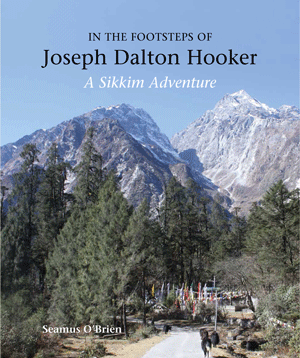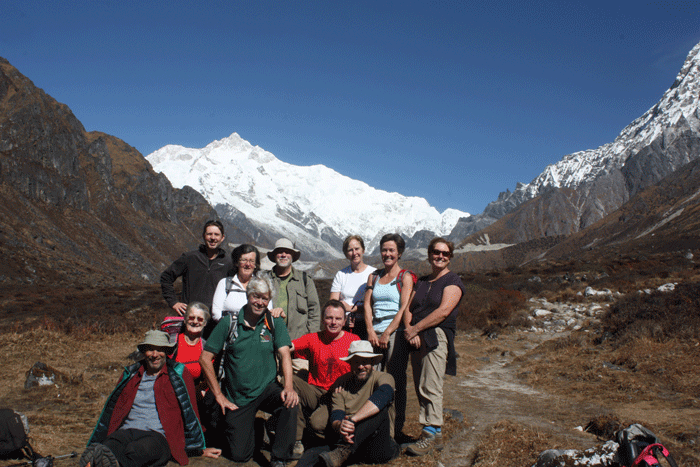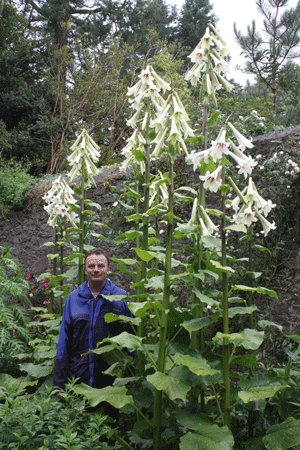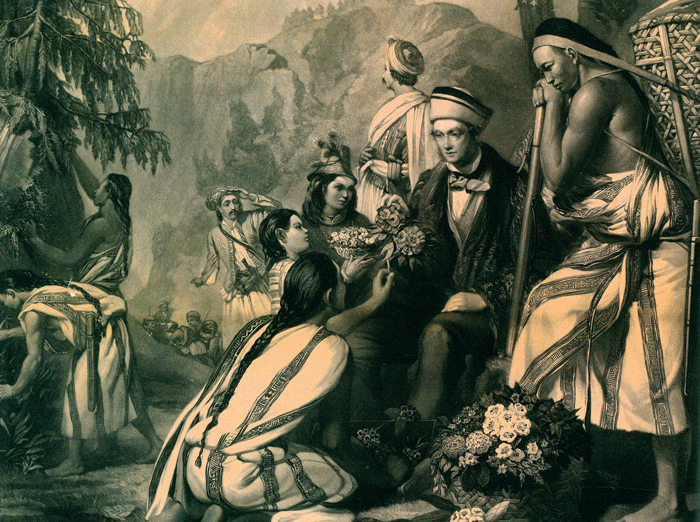In the footsteps of Joseph Hooker – book review
 If anyone deserves to have cult status in the plant collecting world it is Joseph Dalton Hooker (1817-1911), a scientist of breath-taking ability, who would discover a huge number of botanical treasures previously unknown in the West.
If anyone deserves to have cult status in the plant collecting world it is Joseph Dalton Hooker (1817-1911), a scientist of breath-taking ability, who would discover a huge number of botanical treasures previously unknown in the West.
Hooker became one of our greatest botanists and explorers of the 19th century and is perhaps the greatest of the lauded Directors of the Royal Botanic Gardens, Kew.
In this new fascinating travelogue, ‘In the footsteps of Joseph Dalton Hooker – A Sikkim Adventure’, author Seamus O’Brien retraces Hooker’s footsteps in Sikkim, bringing alive to the reader the adventure, dangers and discoveries that Hooker and his companions experienced.
 This year (2018) has seen Kew Publishing producing some superb books and this latest addition is no exception. Beautifully illustrated and informative, ‘In the footsteps of Joseph Dalton Hooker – A Sikkim Adventure’ is a real treasure. The quality of the writing is superb, the research thorough and the wealth of original material outstanding.
This year (2018) has seen Kew Publishing producing some superb books and this latest addition is no exception. Beautifully illustrated and informative, ‘In the footsteps of Joseph Dalton Hooker – A Sikkim Adventure’ is a real treasure. The quality of the writing is superb, the research thorough and the wealth of original material outstanding.
For O’Brien the drive for this expedition came from a yearning to see in the wild the plant discoveries made famous by Hooker, who described the region as ‘a perfect microcosm of the Himalaya‘. In the book, the author describes how these places compare to the descriptions made by Hooker 160 years ago and how in many ways Sikkim has changed little over the course of time. Certainly O’Brien is the perfect choice to follow in Hooker’s footsteps – he manages the National Botanic Gardens, Kilmacurragh, in County Wicklow, an 18th century estate long famed for its historical collection of rare and exotic plants and is Ireland’s best known plantsman.
The author’s mission was not to collect but to study and compare places visited by the great botanist and record how they had fared over the decades. Writing in the Preface he points out that to a group of visiting Irish botanists, the region’s flora was of course the greatest draw and just as it had fascinated Joseph Hooker in Victorian times, so today it very much left them in awe of the biodiversity of this tiny Himalayan state.
This book is a really fascinating read, providing us with a wonderful celebration of one of the greatest adventures by one of history’s greatest botanical scientists. For those interested in the flora of the region and its history this book is a must – it is written with authority, is brimming with vivid description and contains many beautiful illustrations. For the armchair reader it provides just as thrilling an adventure as you follow Seamus and his team across Darjeeling, into East Nepal, the Lachen Valley, and into Sikkim Himalaya. The author admits that it has been one of the greatest adventures in which he has ever participated, citing his very ‘first view of the great mass of Kangchenjunga‘ from their base in Darjeeling and the heady experience of finding the ruins of the Rajah’s Palace at Tumlong.
 (Above: Group with Khangchendzonga above Lamuney)
(Above: Group with Khangchendzonga above Lamuney)
The photography is awesome, there are useful maps, including Hooker’s historic map of Sikkim, charting his progress from the plains of India and the Sikkim Terai. Hooker created the first comprehensive map of the kingdom, highlighting mountain passes that would be of enormous strategic value in the decades to come and it is fascinating to see some of his maps reproduced in the book along with his original sketches of the region and plants.
The Appendix lists Hooker’s Rhododendrons, again beautifully illustrated as well as Joseph Dalton Hooker’s Nepal and Sikkim Plants. There is also a comprehensive Select Bibliography and index to people and places.
 At the start of the book, Seamus provides the reader with a brief history of Hooker’s expedition, setting the scene for what is to follow perfectly.
At the start of the book, Seamus provides the reader with a brief history of Hooker’s expedition, setting the scene for what is to follow perfectly.
Reading this book has been a privilege – the depth of the author’s knowledge, (pictured right next to Cardiocrinum-giganteum) his totally absorbing descriptions of the various environments encountered on the expedition, not to mention the cold nights and altitude sickness! He expertly weaves Hooker’s 19th century notes and experiences into today’s reality in a seamless and entertaining way, providing the reader with a unique experience.
Seamus O’Brien has grown plants since childhood and has wide-ranging interests, though plants from warm-temperate and temperate areas of the world are his primary focus. He trained at the National Botanic Gardens, Glasnevin Dublin and has travelled extensively across the world to study plants in their native habitats.
‘In the Footsteps of Joseph Dalton Hooker – a Sikkim Adventure’, by Seamus O’Brien is published in hardback by Kew Publishing at £40.00. It’s an armchair adventure every gardener should go on and is one of the most entertaining and informative books I have ever read on the subject.
The publisher kindly supplied a Review copy of this publication.
All photographs are ©Kew Publishing/Seamus O’Brien


